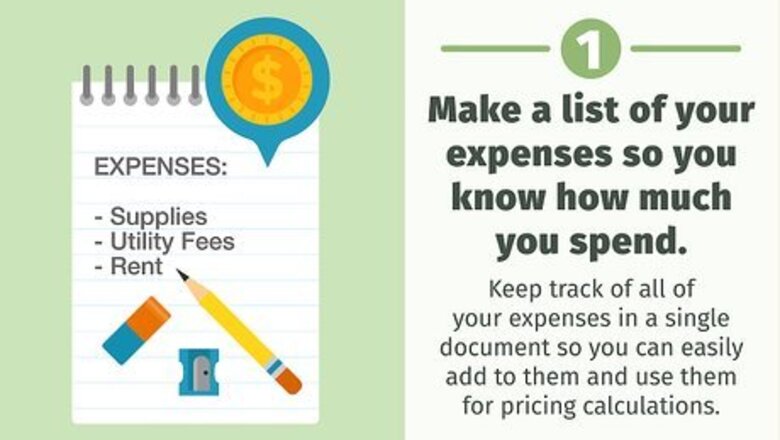
views
Base Price
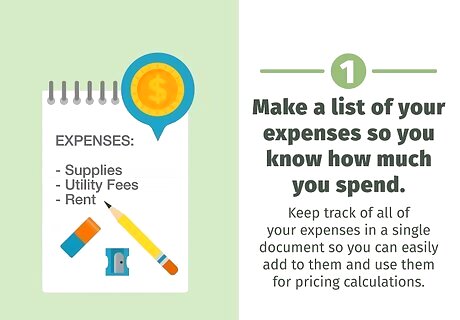
Make a list of your expenses so you know how much you spend. Use a spreadsheet or a notebook to track anything you spend money such as supplies to make your items. Keep track of all of your expenses in a single document so you can easily add to them and use them for pricing calculations. So if you’re making lavender essential oil to sell in your Etsy shop, you’d want a spreadsheet or notebook to keep track of anything you buy to make it such as the oil, the essence of lavender you use, the bottles or containers you sell it in, and the labels you put on the packaging. It’s a lot to keep track of! It can also be helpful to keep all of your receipts handy so you can enter them in later or keep a record of expenses. A digital spreadsheet on Excel or Google Sheets allows you to keep track of your expenses neatly and run calculations easily.
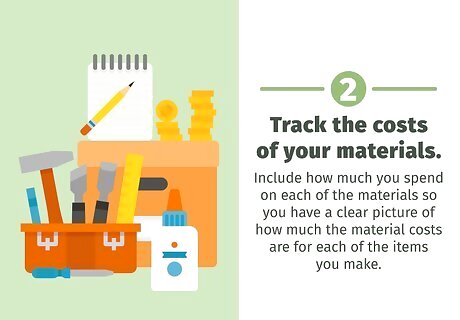
Track the costs of your materials. Make a note in your tracking sheet or list for each of the materials you use to make each item. Include how much you spend on each of the materials so you have a clear picture of how much the material costs are for each of the items you make. For instance, if you’re knitting a scarf to sell in your Etsy shop, you’d track each of the yarns you use as well as any embellishments (things like patches, glitter, or even tags) you add to the final product. It’s super important that you have a clear picture of exactly how much your spending to make each of your items.
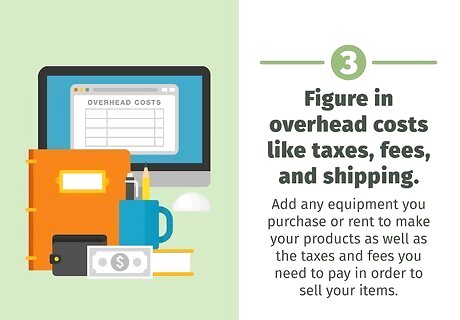
Figure in overhead costs like taxes, fees, and shipping. Don’t forget about the other stuff you spend money on to sell your handmade products on Etsy! Add any equipment you purchase or rent to make your products as well as the taxes and fees you need to pay in order to sell your items. Include the price of shipping as well so you can account for that. For instance, if you bought a laminator to help make your items, include that in your list of expenses. Etsy charges a fee per item that you’ll want to include in your list or spreadsheet. Taxes can vary based on your location so look online to see how much you need to account for in your sales.
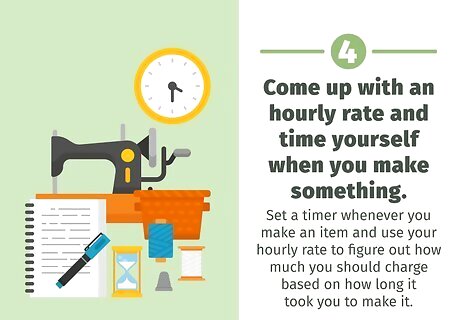
Come up with an hourly rate and time yourself when you make something. Think about what you want to charge for your hourly rate. Set a timer whenever you make an item and use your hourly rate to figure out how much you should charge based on how long it took you to make it. For instance, if you set an hourly rate for $15 USD, and it takes you 2 hours to make your signature handmade scarves, then you’d calculate $30 USD for labor costs. Many professional crafters that sell items on sites like Etsy usually charge an hourly rate of $12-$20 USD to calculate their labor costs.
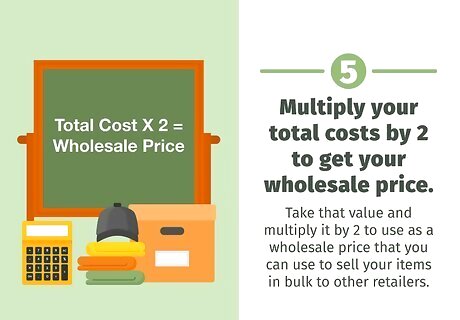
Multiply your total costs by 2 to get your wholesale price. Use your tracking sheet to put together the total cost of all of the materials, fees, taxes, and anything else that went into making an item. Then, add that to labor cost for the total amount of time it took you to make it. Take that value and multiply it by 2 to use as a wholesale price that you can use to sell your items in bulk to other retailers. For example, if it costs you $3.50 USD in materials to make a custom wooden sign, and it takes you 1.5 hours to make it, with an hourly rate at $15 your total costs would be $26 USD. That means your wholesale price would be $52 USD. You want your wholesale price to be cheaper than your retail price to encourage a supplier or store to buy a whole bunch of your items.
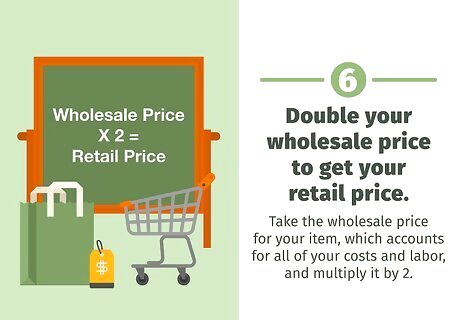
Double your wholesale price to get your retail price. Take the wholesale price for your item, which accounts for all of your costs and labor, and multiply it by 2. Use that value as your standard retail price for your item. So let’s say your wholesale price for a handmade necklace is $24 USD. Your retail price would be $48 USD. Keep in mind you can always tweak your pricing and adjust it up or down if you want to.
Market Adjustments
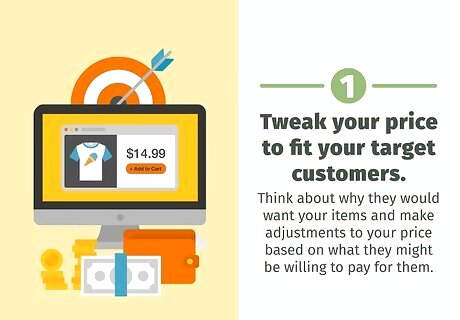
Tweak your price to fit your target customers. Find the target market for your items by figuring out who the type of people that want to purchase them are. Think about why they would want your items and make adjustments to your price based on what they might be willing to pay for them. For instance, if you’re selling detailed prints of the night sky on a specific date, you could up the price because your print could make a great anniversary or birthday gift for someone. So if your normal retail price for a print is around $20 USD, you could charge $25-$30 for a higher demand item.
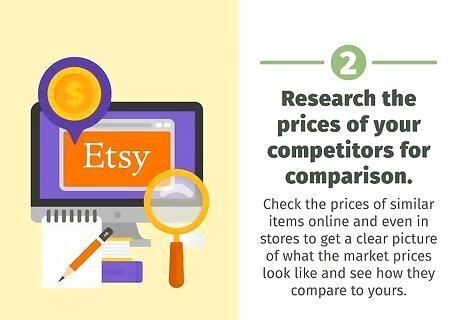
Research the prices of your competitors for comparison. Look through Etsy shops that sell items similar to yours to see what they’re charging. Search through retailers that aren’t on Etsy as well. Check the prices of similar items online and even in stores to get a clear picture of what the market prices look like and see how they compare to yours. Make adjustments to your own prices if you need to so people are more likely to buy them. For instance, if you’re selling hand-stitched face masks for $15 USD apiece, but you see other Etsy shops selling similar items for $5 USD, you may need to lower your prices a bit to be competitive. Be careful not to undervalue your items or try to set the prices much lower than your competition. It could turn into a vicious cycle of you and your competitors setting your prices lower and lower.
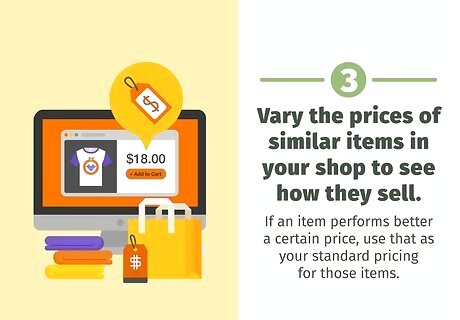
Vary the prices of similar items in your shop to see how they sell. Use a process called an A/B test to see how well items sell at various prices. If an item performs better a certain price, use that as your standard pricing for those items. For instance, let’s say you make crochet beanies. You could sell 1 for $15 USD and another for $25 USD in your shop. If 1 of the prices does much better at generating sales, use that price! Experimenting and playing around with different prices can help you nail down the best price for your items.
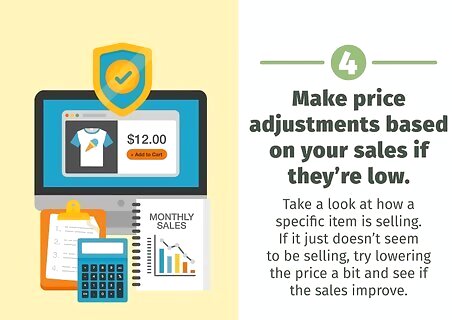
Make price adjustments based on your sales if they’re low. Take a look at how a specific item is selling. If it just doesn’t seem to be selling, try lowering the price a bit and see if the sales improve. If they do, you can keep the price at the same level. If they don’t, you could try lowering the price further to see if that helps.


















Comments
0 comment